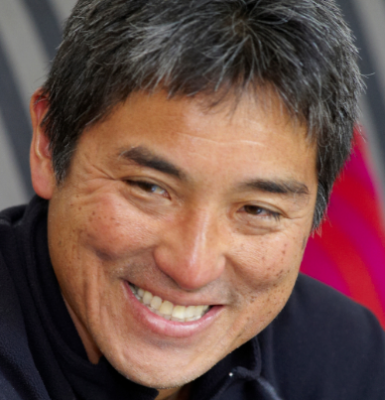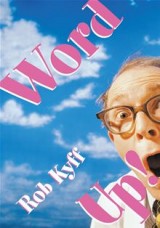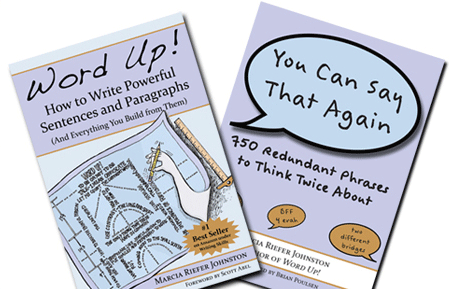The write-up below appeared earlier today as a guest post for The Content Wrangler blog. Many thanks to The Content Wrangler himself, Scott Abel, for introducing me to Guy Kawasaki’s inspiring work and for encouraging me to tell this story. —Marcia

Guy Kawasaki
Recently, I had an experience that any writer would give an arm for. I had my book APE’d by Guy Kawasaki.
Who’s Guy Kawasaki? When big companies want a speaker to inspire their employees, they call Guy. Guy has four million Google+ followers. Guy has, among other things, a dozen books to his credit, including the New York Times bestseller Enchantment: The Art of Changing Hearts, Minds, and Actions. When Guy’s most recent book, APE: Author, Publisher, Entrepreneur—How to Publish a Book, launched in January, it immediately shot to the top of several Amazon categories. Since then, the term “APE” has carved out a new place in the lexicon, as in “Have you APE’d your book yet?”

Peg Fitzpatrick
On March 1, Guy teamed up with social-media maven Peg “Positively Peggy” Fitzpatrick to APE my book. At least they gave me a sampling of their expert analysis. This distinguished duo spent a half hour during a Google+ Hangout on Air critiquing the social-media plan for my book, Word Up! How to Write Powerful Sentences and Paragraphs (And Everything You Build from Them).
What a learning opportunity, not to mention a thrill.
How did I come to have this opportunity? I took a cue from Guy, who likes to say, “You don’t get if you don’t ask.” I asked.
Want to see the recorded session? You’ll find the embedded video at the end of this post. The full session lasts an hour: the first half on my book, the second half on a book by fellow author Rick Watson. (If you like, jump straight to YouTube now: Video of APE Makeover Hangout with Guy Kawasaki, Peg Fitzpatrick, Marcia Riefer Johnston & Rick Watson)
Want a peek into some highlights and takeaways? Read on. Even if you don’t have a book coming out—rumor has it a few people still don’t—if you dream of writing a book, or if you use Twitter, Facebook, Google+, a blog, or any other social-media channel to sell anything, I bet you’ll find some advice here that you can use.
Guy kicked off our Hangout (after he figured out how to get his phone to stop ringing) by assessing my book title:
“I think the title is very nice. I’m into short titles. Mine has three words. I like ‘word up.’ I think it’s a clever use. It’s like ‘man up.’ Positive energy. Like ‘Let’s get something done here.’ I like that it’s brief and upbeat and has that exclamation point. I like that, after that, you clearly explain what this book is about, there’s no vagueness. It’s plain and simple: ‘writing powerful sentences and paragraphs.’ Also—maybe this will date me—the parenthetical phrase ‘and everything you build from them’ reminds me of ‘everything you wanted to know about sex’ … I think it’s a good title and good subtitle.”
Peg: “I like it, too. It’s very descriptive. It says exactly what it is. There’s no guessing about what her book is about. If I was going to read this description on Amazon, I would know exactly what I was getting.”
Whew, I thought. I got a pass on at least one thing.
Next, Guy discussed the front cover: “On Amazon, it’s going to be the size of a postage stamp. In that view, you can’t read the title.” Peg agreed: “When it’s in the thumbnail, you can’t see any of it.”
How did I never consider the thumbnail view? Action item #1: Bigger title.
On to the back cover. Guy conjured a scenario:
“That paragraph at the top seems awfully long. You have to picture people with ADHD reading these descriptions and clicking around. That’s a big eyeful … I don’t think your mindset should be someone is standing in Powell’s on a Saturday night having just had a wonderful dinner and is picking up interesting books, reading the back cover carefully, appreciating the sensibilities of the author … You’re selling to someone who has just checked in for a flight out of PDX, ripping through the security line, found out that he or she had ten minutes extra before boarding and is now standing in the bookstore inside the Portland airport, and there’s James Patterson, there’s David Baldacci, there’s Tom Clancy. Somehow this person wanders to the nonfiction section and sees Word Up! At that moment, they’re saying, ‘We’re now beginning to board.’”
Action item #2: Back cover, more scannable.
Guy noted that he didn’t love the cover design, and he cautioned against believing others who claimed they did: “Most people will not tell you what they believe … Nobody goes up to a mother who just gave birth and says, ‘Your baby’s ugly. What was your kid’s Apgar score? Because, wow!’” He suggested getting rid of the cover image in favor of an all-text cover. As an example, he cited The Chicago Manual of Style.
Deep breath. Keep the mind open. Guy is THE GUY.
We moved on to price. Guy mentioned that APE costs $10 for the e-book and $25 for the paperback, a $15 spread. He suggested keeping the spread no larger than that. For my e-book, I had been considering charging $2.99, which he deemed “low for a serious nonfiction book.” He added,
“There’s such a thing as communicating the branding and the positioning and the value of a book with the price. We’re charging $10 because that’s the highest we can charge and still get 70% royalty. I also believe that’s the lowest we can charge to be taken seriously. Because your book is nonfiction, and you want it to help people become better writers, it is a more serious book than a $2.99 novice-novelist-gothic-zombies-romance.”
As for the paperback price, I had proposed $21.99, which fell in the middle of the wide price range I had seen in my comparisons. Peg had done her own research and felt that $21.99 was too high. Guy noted that, when it comes to setting prices, “Nobody’s an expert. We’re all making it up.”

Word Up by Rob Kyff
We never resolved the question of price. The conversation took an abrupt turn when Peg pulled up the image of another book entitled “Word Up!” by a nationally syndicated columnist. Same title, same topic. “Wow,” Guy said. (Gulp.) “Books can have the identical title. They’re not trademarkable. Go look up the word ‘love’—see how many books are called ‘Love.’” But, he said, going up against an established author who has already used my main title could create confusion. “It’s not a legal problem, but arguably it’s worse than a legal problem. A legal problem you might win or lose. With a marketing problem, you’re not going to sell.”
When Peg pulled up my website, entitled How to Write Everything, Guy said, “Why don’t you just change your [book] title to ‘How to Write Everything’?”
But, but, but …
“That is a little bold,” Guy allowed. Still, if pressed to decide at that moment, now that he knew about this other Word Up!, he’d favor changing my title. For the same reason, after some hesitation, Peg agreed. A few minutes later, APE coauthor, Shawn Welch (who had participated in previous critiques but was otherwise engaged during this one), texted Peg to weigh in: he would rename the book, too.
Et tu, Shawn? Mind, open.
Next, we talked about social media. Peg had done her homework, reviewing my Twitter pages (one for me and one for the book), my Facebook pages (one for me and one for the book), my Google+ pages (one for me and one for the book), my Goodreads pages, and my YouTube channel (with book trailer pending). She asked a stunning question, “Do you feel you have too many social-media presences?”
A social-media consultant suggesting doing less?
Peg: “That’s a lot of content to manage. What you don’t want to do is repeat the exact same thing on all of those accounts.” She suggested focusing on my favorites. If she had to pick, she said, she’d go with a combination of Google+ (for the SEO value and the “great conversation”) and Twitter. As for Facebook, she said, “It’s harder. It’s your friends. They’re either going to buy your book or they’re not.”
Guy added, “I made a few mistakes trying to build social presences for specific books. At every point when I wrote a book, I thought this was going to be the last book I ever wrote. In every instance, I was wrong.” He now has a collection of book pages. He wishes that he had simply created an author page, adding, “You don’t want to build a massive fan base for a particular book.”
?!
As we talked, a small head kept popping up at the bottom of Guy’s screen. Nate climbed up into his dad’s lap, whispered hello to us, and then scooted off. Video chatting has unique joys: you get to see and hear what’s going on around people. Guy and Peg and I weren’t just talking about social media—we were using it, enjoying each other’s company.
Our conversation went on. I added a few more action items to my list. If you’re still reading this, you’ll find the whole the Hangout worth watching. I’m leaving you some things to discover.
What you won’t get from the video is what happened after Guy, Peg, Rick, and I said our Google+ good-byes. The video won’t give you any insight into the post-Hangout arguments that went on in my head. The video won’t hint at the talks I had with my husband, the messages I got from Hangout listeners, the opinions of friends, or the coaching of other consultants. (Guy’s not the only one advising me who has shepherded books to bestseller status.)
Some changes required no debate. Yes, I will make the front-cover title bigger. Yes, I will make the back cover more scannable. I will reconsider my pricing. I will follow other advice I received in this once-in-a-lifetime session with the stars. Gratefully!
But give up “Word Up”? Ditch my cover illustration (the blueprint sketching itself)?
I went back and forth. I slept on the whole mix of opinions. At one point, with the clarity of a tap on the shoulder, I realized that I wasn’t debating any more. The decisions had made themselves.
For one thing, I’m keeping my cover illustration. Its details may get lost at the squinty size of Amazon’s thumbnail view. And sure, not everyone will like it. But I like it, and I trust at least some of the positive response it has received. The image speaks to the playfulness of the book. I’m not writing The Chicago Manual of Style, and I don’t want to emulate its straight-text cover design.
As for my title, Word Up! stays. It has character. It has voice—the right voice. “Soul,” I’ve been told. It’s germane. It fits.
Maybe a radically different cover design and title would sell more books. Who can say? I’m okay with that possibility. During the two years of my author-publisher-entrepreneur adventure, I’ve learned two big lessons. (1) Everyone’s input has value. (2) Everyone will never agree. When you self-publish, for better or worse, you have the final word. You might as well create a book you love.
Google+ Hangout on YouTube: APE Makeover Hangout with Guy Kawasaki, Peg Fitzpatrick, Marcia Riefer Johnston & Rick Watson




Marcia, I watched the APE session, but I hadn’t compared the covers from the advance copy to the new covers. I really like the way you translated the advice. You’re right–the new front cover stands out much more. As for the back cover, I kinda miss the original blurb, but I’m an inveterate reader, not someone whose plane has just begun boarding. 🙂 I like the new blurb too, just not as well as the original. HOWEVER, I really like the space it frees up for all those great recommendations. The layout is cleaner too, and I like the enlargement of the headline and the fact that you were able to keep that friendly font. Bravo!
Linda, Thanks for the detailed feedback. Your message does my heart good.
Great content! Thank you, Marcia.
You’re welcome, Alinka. Thanks for the comment.